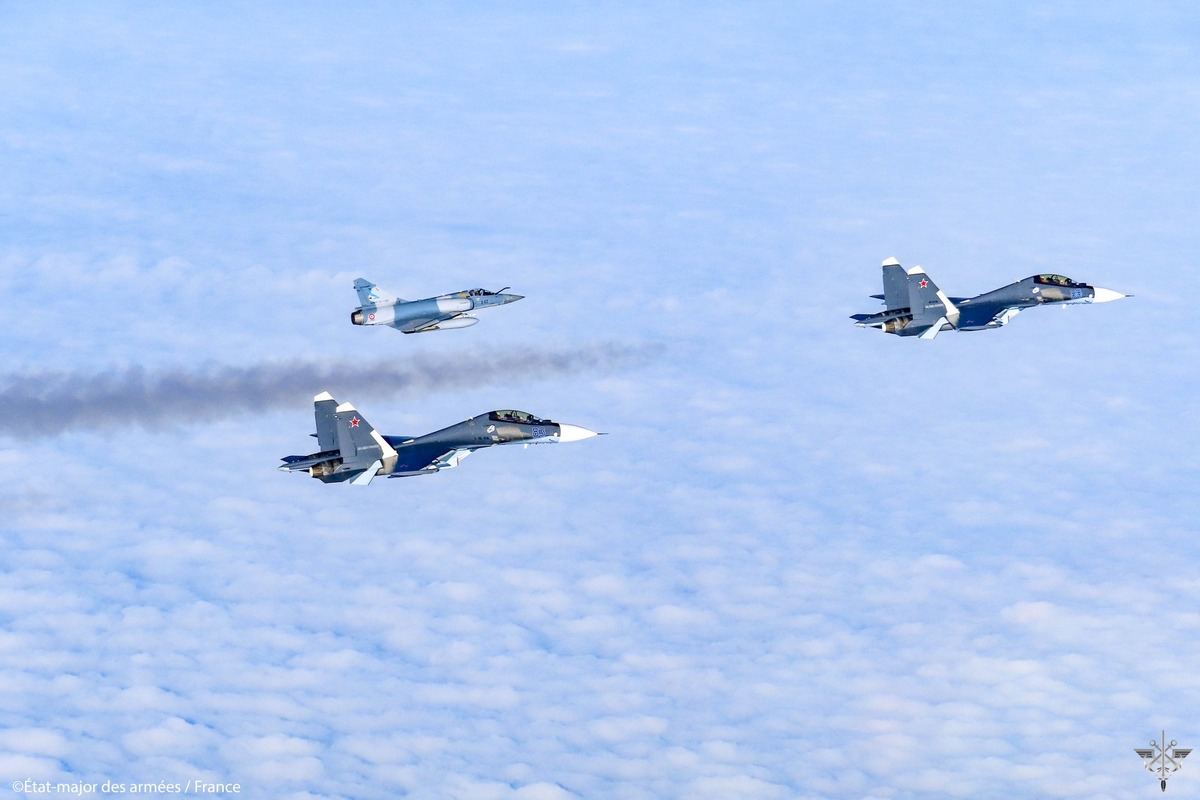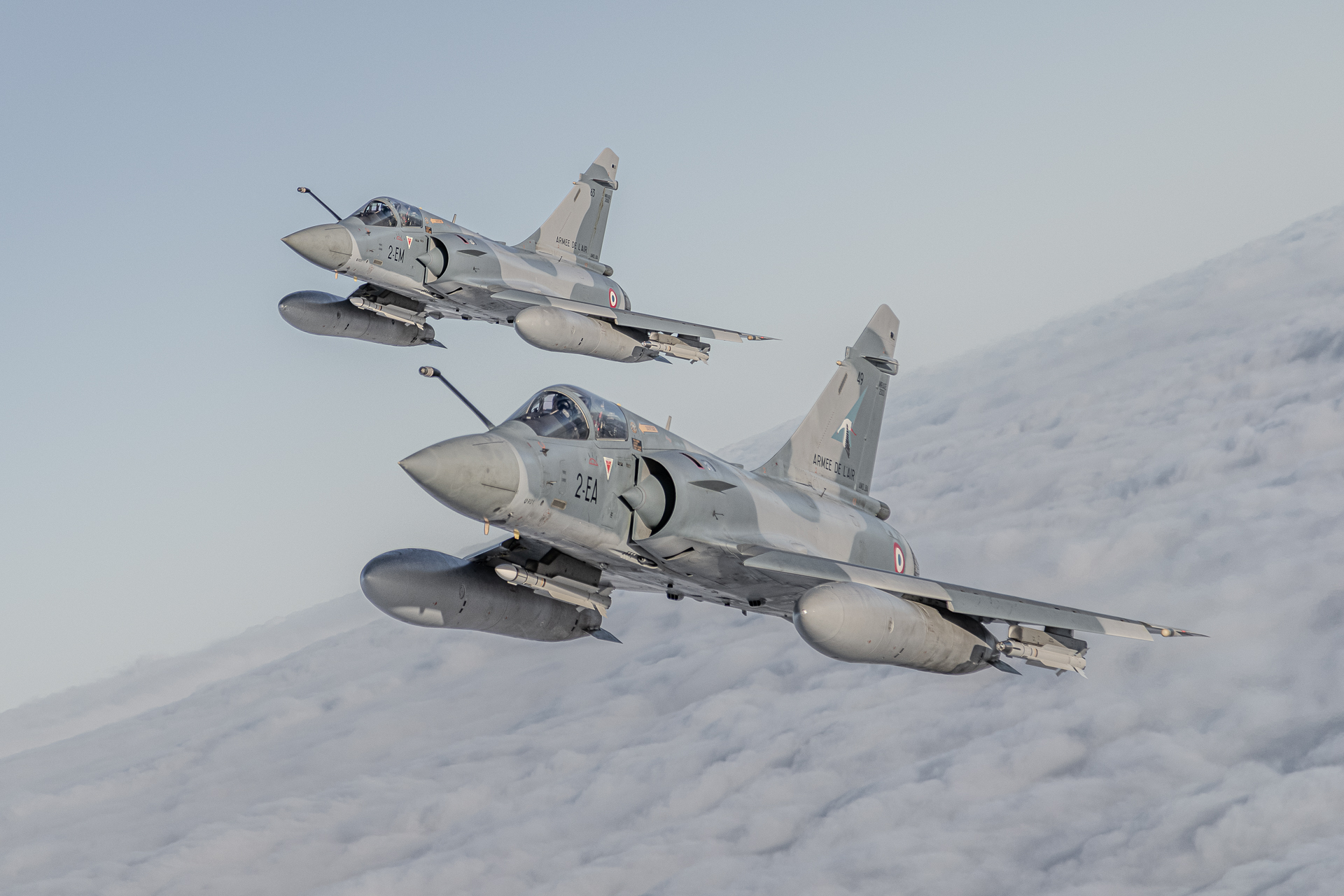In a high-stakes aerial encounter, two French Mirage 2000-5 fighter jets intercepted two Russian SU-30-M aircraft over the Baltic Sea on February 29, marking a tense moment in the already strained relations between NATO and Russia.
The NATO Air Force Command announced on Twitter and also shared a video with the statement, “Check out how it looks when two French Mirage 2000-5 intercept two Russian SU-30-M aircraft over the Baltic Sea yesterday.”
The incident unfolded when the French fighters, part of NATO’s Baltic Air Policing mission, scrambled to intercept the Russian jets as they approached international airspace.
The Mirage 2000-5 jets moved to intercept the SU-30-Ms, demonstrating NATO’s commitment to safeguarding the airspace of its member states.
Following the interception over the Baltic Sea, the French fighters were reassigned to a new mission, where they once again intercepted a Russian aircraft, this time an AN-72, flying in international airspace north of Poland.
Check out how it looks, when 2 🇫🇷 Mirage 2000-5 intercept 2 🇷🇺 SU-30-M aircraft over the Baltic Sea yesterday
Directly after 🇫🇷 fighters were re-tasked to a new mission, where they also intercepted a 🇷🇺 AN-72 flying in international airspace North of 🇵🇱#SecuringTheSkies #NATO pic.twitter.com/wszcsdoc4U
— NATO Air Command (@NATO_AIRCOM) March 1, 2024
The quick response and efficient interception highlighted the readiness and capabilities of NATO forces in the region.
Meanwhile, the General Staff of the French Armed Forces (EMA) stated that the Russian SU-30-M fighter aircraft were intercepted “off the Latvian coast,” whereas the An-72 transport aircraft was intercepted “off the Lithuanian coast.”
The aerial confrontation occurred when Russian President Vladimir Putin directed sharp criticism towards the West. Putin warned of using nuclear weapons against NATO countries if they deployed forces to aid Ukraine against a potential Russian triumph.
While the majority of Putin’s speech to Russia’s Federal Assembly focused on domestic matters, he issued a stern warning, indicating retaliatory measures against the West if Russian territory came under attack.
Even as he highlighted Russia’s strategic nuclear forces’ readiness, Putin remarked that Western leaders viewed war as “a cartoon.”
He proudly asserted the utilization of Russia’s cutting-edge hypersonic nuclear-capable weapons, like the Kinzhal and Zircon missiles, in Ukraine, with additional systems nearing completion in testing phases.

Growing Confrontation Between NATO & Russia
Following Russia’s war in Ukraine, NATO has significantly bolstered its air defenses on the eastern flank, deploying additional fighter jets and ground-based air defenses while carrying out surveillance flights. In response to Russian strikes near NATO territory, fighter jets were deployed to Romania.
Throughout 2023, NATO air forces across Europe scrambled over 300 times to intercept Russian military aircraft approaching Alliance airspace, with a majority of these intercepts occurring over the Baltic Sea.
NATO maintains standing air-policing missions that mandate Allied jets to scramble in the presence of Russian military planes exhibiting unpredictable behavior near Allied airspace.
On NATO’s eastern flank, Russian military aircraft have a history of not transmitting transponder codes indicating their position and altitude, neglecting to file flight plans, and avoiding communication with air traffic controllers.
The latest encounter adds to a series of events involving Russian and NATO military forces amidst the ongoing conflict in Ukraine.

Just last month, France’s defense minister revealed a concerning incident where Russian forces threatened to shoot down a French surveillance aircraft patrolling international airspace over the Black Sea.
This incident underscored Moscow’s aggressive behavior as its invasion of Ukraine faced challenges, the Minister said.
This, however, was not an isolated event. In 2022, a Russian fighter jet launched a missile close to a British Royal Air Force RC-135 Rivet Joint surveillance aircraft operating in international airspace over the Black Sea, as reported by the British government.
In March 2023, the United States government released video footage showing a Russian fighter jet dumping fuel on a US Air Force surveillance drone, causing it to crash into the Black Sea.
On the other hand, Russian military officials and experts have accused NATO forces of providing crucial military intelligence to Ukraine in its operations against Russia.
NATO’s AWACS aircraft, flying at high altitudes along the Black Sea coast, employ powerful radar and surveillance equipment to monitor activities in the Crimean Peninsula related to missile launches, airborne bombing runs, and other military operations in the ongoing conflict.
In response, the Russian military has intensified efforts to strengthen its presence to counter NATO aircraft. Nonetheless, despite the escalating tensions, the vast majority of aerial interactions between NATO and Russian jets have been safe and professional, with breaches of NATO airspace by Russian military aircraft remaining rare and of short duration.
- Contact the author at ashishmichel(at)gmail.com
- Follow EurAsian Times on Google News




